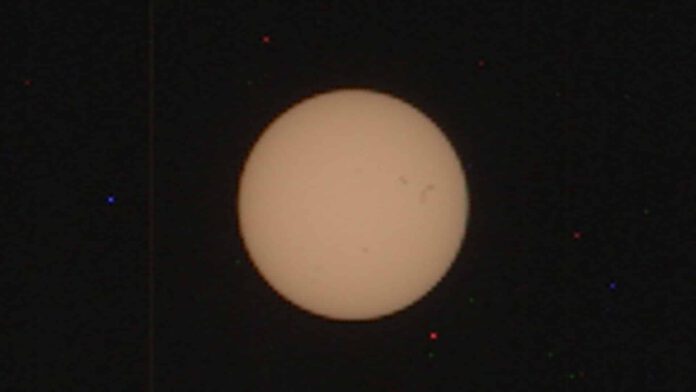
Sunspots can also be observed from the surface of Mars. The Mars rover Perseverance has taken a snapshot of our parent star from the red planet.
Sunspots are areas on the sun that are cooler than their surroundings. They are caused by disturbances in the star’s strong magnetic field. Looking at the sun through a solar filter, you can observe the black spots. In reality, these spots are not actually black, but appear so because the rest of the sun’s surface is extremely bright.
Every day, Mars rover Perseverance takes a picture of the sun using its Mastcam-Z camera. Scientists do this to determine the amount of dust floating in the atmosphere of the red planet. It’s not unusual for Perseverance to capture sunspots, but it can only do so if these spots are large enough. A sunspot group AR3576 – fifteen times larger than Earth – turns out to be big enough to see from the Martian surface.
The approaching solar maximum
As we near the solar maximum – the peak in the 11-year solar cycle – we are likely to encounter such large sunspot groups on the solar surface more frequently. These large sunspots generally produce heavier solar storms, increasing the chance to spot the northern lights in the coming years. This is good news for northern lights enthusiasts!
The future of sunspot group AR3576
The massive sunspot group AR3576 is slowly moving away from us. Considering the sun rotates about its axis in about 29 days, we might see the group again in a little over two weeks. Will the group have dispersed by then or grown even further? Time will tell.











